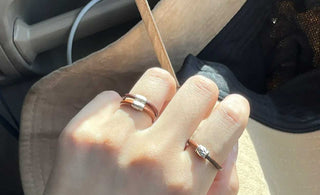
Introduction:
Tibetan jewelry is a treasure trove of cultural richness and aesthetic beauty, with each piece telling a story that spans centuries. In this ultimate guide, we will embark on a journey to explore antique Tibetan jewelry, delving into its captivating beauty and uncovering the profound cultural significance embedded in these stunning adornments. Our exploration will be divided into five key aspects, each shedding light on different facets of this unique and timeless art form.
1.Historical Context of Tibetan Jewelry :
To truly understand the allure of antique Tibetan jewelry, we must first delve into its historical context. Dating back to ancient times, Tibetan jewelry has been shaped by a myriad of influences, including Buddhism, nomadic lifestyles, and interactions with neighboring cultures. Examining the evolution of these adornments over the years provides valuable insights into the cultural, religious, and social dynamics that have influenced their design and symbolism.
2.Materials and Techniques :
The materials used in crafting antique Tibetan jewelry play a pivotal role in its uniqueness. From silver and turquoise to coral and yak bone, each material is carefully chosen for its symbolic significance. Our exploration will unravel the intricate techniques employed by skilled artisans, encompassing traditional methods passed down through generations. Understanding the craftsmanship involved adds a layer of appreciation for the skill and dedication required to create these timeless pieces.
3.Symbolism and Iconography :
Endless Knot, Dorje, and Auspicious Symbols The Endless Knot, known as the 'shrivatsa' in Sanskrit, represents the eternal interplay and interconnectedness of all things. It symbolizes the cyclical nature of existence, embodying concepts of interdependence and continuity. Within Tibetan jewelry, this motif often appears as an intertwined pattern, reflecting the inseparable link between wisdom and compassion, a central tenet in Tibetan Buddhism. Similarly, the Dorje, or Vajra, signifies the indestructible nature of enlightenment, serving as a spiritual tool to overcome obstacles and achieve clarity of mind. These symbols, alongside various auspicious symbols like the conch shell, lotus, and the wheel of Dharma, carry layers of meaning that resonate deeply within Tibetan culture and spirituality.
Amitayus Tibetan Buddha Statues and Their Symbolism Amitayus, the Buddha of Infinite Life, embodies longevity, wisdom, and compassion. Tibetan Buddha Statues depicting Amitayus often portray him seated in meditation, holding a vessel filled with the elixir of immortality, symbolizing his ability to bestow long life and healing. These statues, crafted meticulously by skilled artisans, not only serve as religious artifacts but also represent an embodiment of spiritual aspiration and the pursuit of enlightenment. The choice of materials like jade and porcelain further accentuates their significance, as jade symbolizes purity, harmony, and protection, while porcelain reflects the exquisite craftsmanship and artistic excellence revered in Tibetan culture.
Oriental Classic Crafts and their Cultural Resonance: Oriental Classic Crafts encompass a wide array of artistic expressions, including intricately designed jewelry, pottery, textiles, and more. Within the realm of Tibetan craftsmanship, these crafts serve as repositories of cultural heritage and artistic traditions. Through techniques passed down through generations, artisans infuse these crafts with symbolism and spiritual significance. Whether it's a porcelain vase adorned with auspicious motifs or a textile intricately woven with symbols of prosperity and well-being, each piece encapsulates the essence of Tibetan beliefs and values, reflecting a harmonious blend of artistry and spirituality.
Tibetan jewelry is replete with symbolism and iconography, often rooted in religious and cultural traditions. This section will decipher the meaning behind common motifs such as the endless knot, dorje, and auspicious symbols. By unraveling the symbolism, we gain a deeper appreciation for the spiritual and cultural narratives woven into each piece, making them more than mere adornments but carriers of profound meaning.
4.Regional Variations :
The diverse landscapes and communities within the Tibetan region have given rise to unique regional variations in jewelry styles. From the bold and vibrant pieces of Amdo to the intricately detailed designs of Kham, our exploration will take a regional lens to uncover the distinct characteristics that define each style. This segment provides a glimpse into the geographical diversity that enriches the tapestry of Tibetan jewelry.
5.Preserving and Collecting Antique Tibetan Jewelry :
As custodians of a rich cultural heritage, it is essential to explore the methods and practices for preserving and collecting antique Tibetan jewelry. From proper storage to ethical considerations, this section will guide enthusiasts on how to appreciate, care for, and responsibly collect these valuable artifacts.
Conclusion:
In conclusion, our ultimate guide on exploring antique Tibetan jewelry has taken us on a comprehensive journey through its historical, material, symbolic, regional, and preservation aspects. These stunning adornments not only reflect the artistic prowess of Tibetan craftsmanship but also serve as windows into the profound cultural heritage of the Tibetan people.

Amitayus Tibetan Buddha Statues Jade Porcelain Oriental Classic Crafts
























